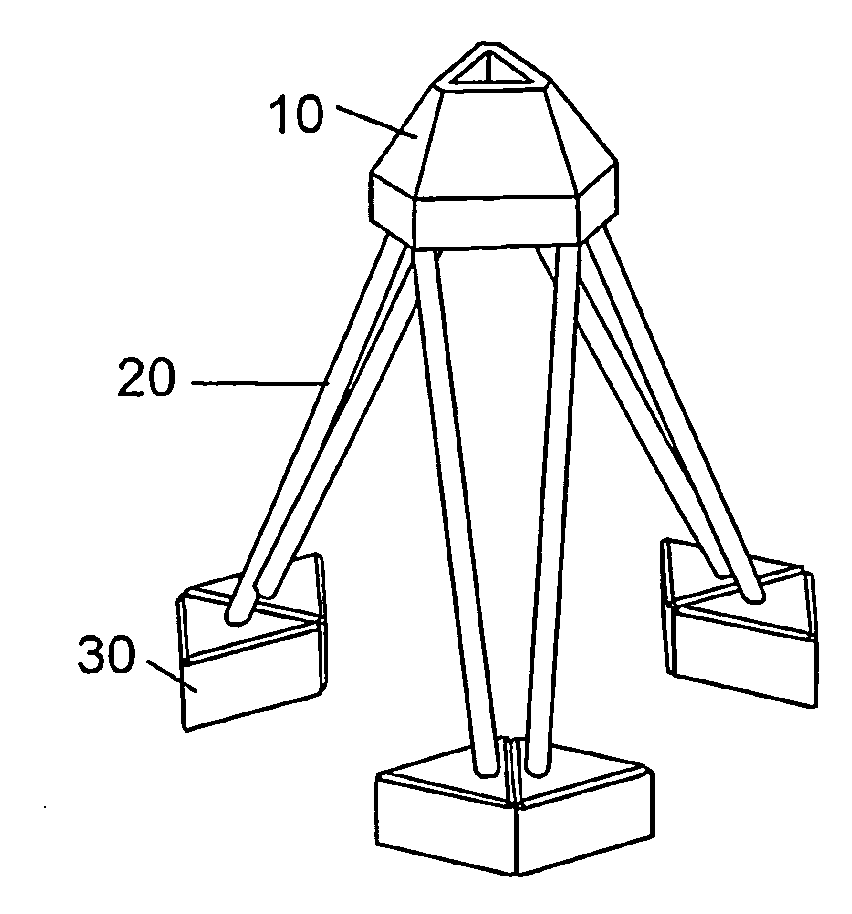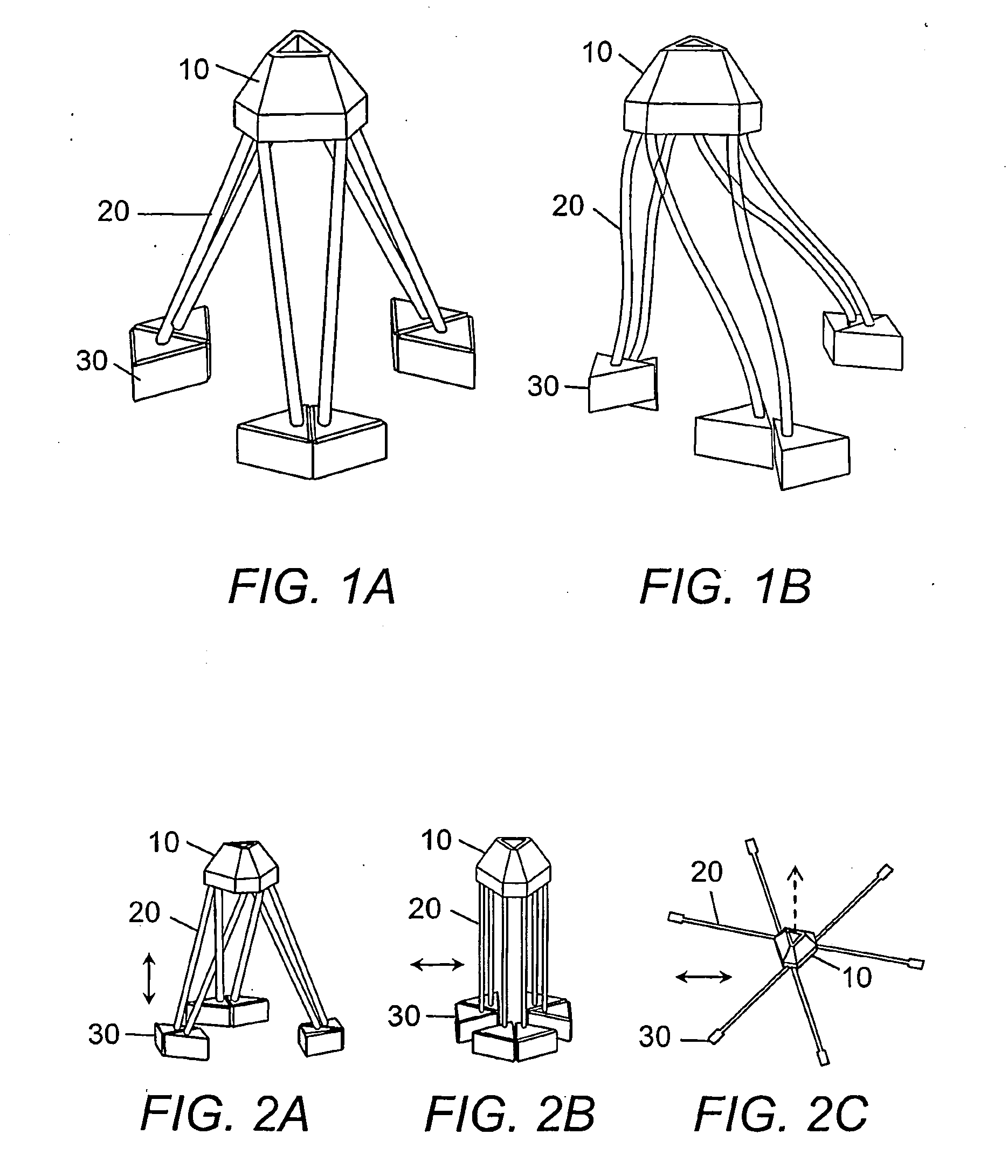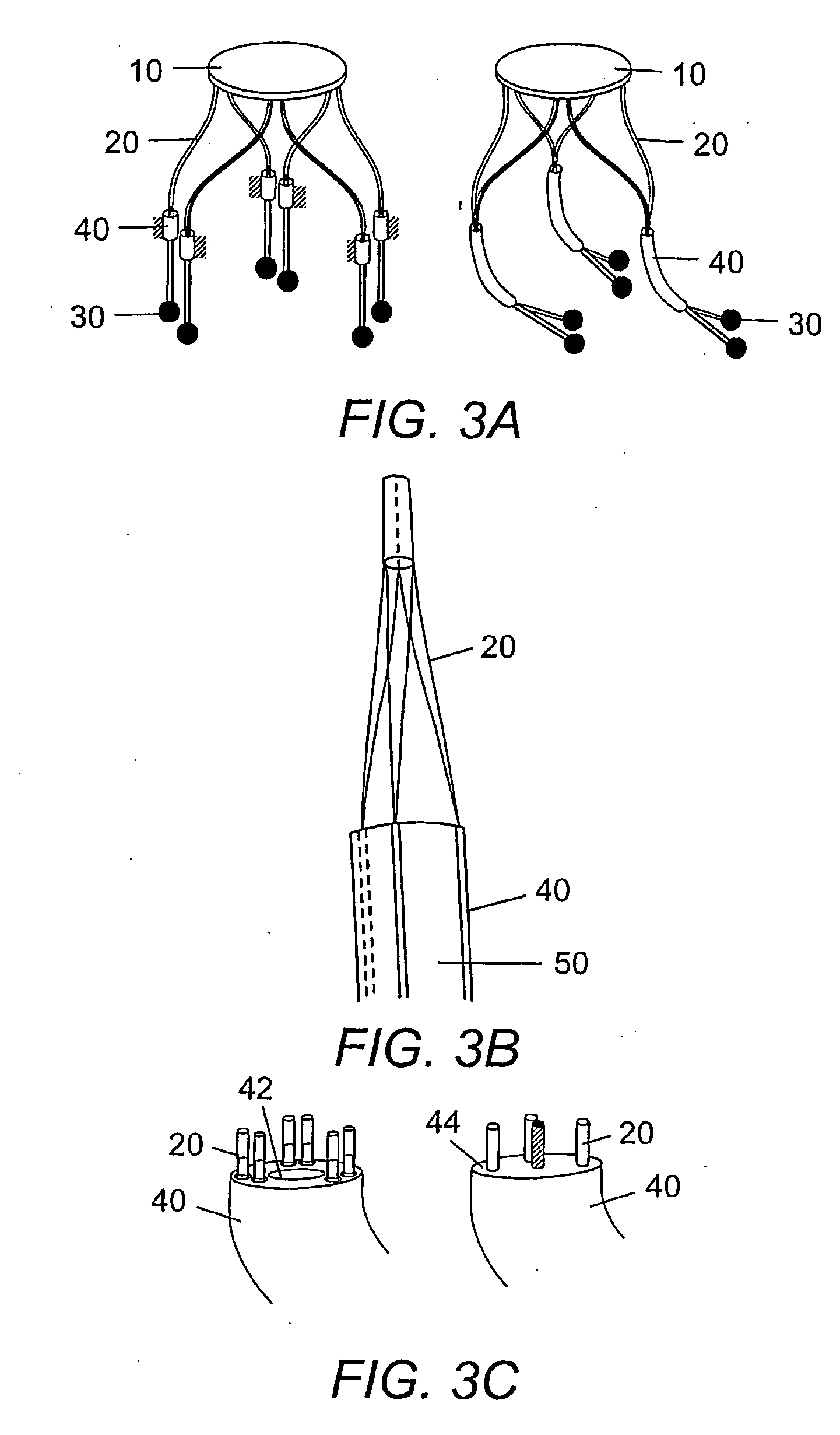Flexible Parallel Manipulator For Nano-, Meso- or Macro-Positioning With Multi-Degrees of Freedom
a parallel manipulator and multi-degree technology, applied in the direction of mechanical control devices, instruments, process and machine control, etc., can solve the problems of scaling laws of mechanical friction, fabrication, and difficult fabrication and control,
- Summary
- Abstract
- Description
- Claims
- Application Information
AI Technical Summary
Problems solved by technology
Method used
Image
Examples
Embodiment Construction
[0017]The present invention is a flexible parallel manipulator device based on the jointless motion mechanism commonly found in nature, e.g., cilia and flagella. The jointless manipulator disclosed herein is advantageously scalable and can be used for nano-, meso- or macro-manipulation as it provides friction- and backlash-free, multi-degrees of freedom motion. Referring to FIG. 1, the flexible parallel manipulator device is composed of a plurality of independent elastic fiber legs 20 which are attached, welded or bonded using standard joining methods (e.g., fusion welding, solid-state welding, brazing, soldering, adhesive bonding, and mechanical fastening or clamping) to a top platform 10 at various locations. In particular embodiments, the device has at least two elastic fiber legs, three elastic fiber legs, four elastic fiber legs, five elastic fiber legs, or more than six elastic fiber legs. In other embodiments, the device has at least six elastic fiber legs (see, e.g., FIG. 1)...
PUM
 Login to View More
Login to View More Abstract
Description
Claims
Application Information
 Login to View More
Login to View More - R&D
- Intellectual Property
- Life Sciences
- Materials
- Tech Scout
- Unparalleled Data Quality
- Higher Quality Content
- 60% Fewer Hallucinations
Browse by: Latest US Patents, China's latest patents, Technical Efficacy Thesaurus, Application Domain, Technology Topic, Popular Technical Reports.
© 2025 PatSnap. All rights reserved.Legal|Privacy policy|Modern Slavery Act Transparency Statement|Sitemap|About US| Contact US: help@patsnap.com



